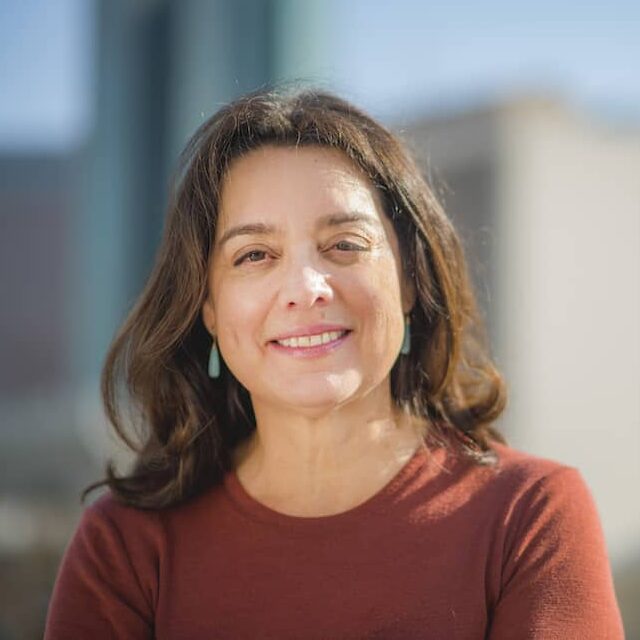Our latest multi-newsroom reporting collaboration wrapped on Sunday. The four-part series, “Last Resort” examines the slow-motion collapse of specialized schools most Coloradans likely do not know exist.
Thousands of Colorado students attend what the state calls “facility schools.” These schools provide a combination of therapy and academics to children and young people with intense mental and behavioral health needs. They are crucial links in a system that connects the state’s long underfunded education system and its equally underfunded mental and behavioral health systems.
A state work group referred to facility school students as Colorado’s “most vulnerable.” And, yet, over the last two decades the number of such schools has fallen from 80 to 30. Only one school remains standing in rural Colorado and it’s on the Western Slope. Closures of this magnitude have consequences. The stories that make up our “Last Resort” series explore those consequences, how we got here and the solutions in the offing.
It’s a must-read.
But I want to take a moment here to tell you, our supporters, what “Last Resort” represents in our evolution as a nonprofit striving to support and strengthen local news in Colorado.
One of the things we ask ourselves regularly at COLab is: How do we best serve our partner newsrooms as they grapple with lean budgets, shrinking staffs and more news than they can cover? How do we help them become more stable and able to offer coverage with greater impact and value to their audiences? Implicit in these questions is the belief that better informed Coloradans make for a better Colorado.
In that spirit of service, we changed the way we approach collaborative projects. The ideas for our last projects, “On Edge” and “Chasing Progress,” came out of COLab. This year, we turned to our 180+ partner newsrooms to ask what projects they needed help with. Our goal was not only to assist with the journalism, but also to use that journalism to guide our partners toward expanded ways to connect with their audiences, advertisers and underwriters. Chalkbeat Colorado submitted the idea for what would become “Last Resort.”
The Colorado Sun and KFF Health News quickly signed on to join Chalkbeat. Over more than three months, I managed a team that filed open records requests, sifted through state documents, visited facility and non-facility schools, and interviewed dozens of people, including students, their family members, special education specialists, disability rights advocates, educators, and lawmakers.
Reporters Melanie Asmar (Chalkbeat), Helen Santoro and Rae Ellen Bichell (KFF Health News), Jen Brown and Erica Breunlin (The Colorado Sun) gained the trust of families and educators who are under tremendous stress. Photojournalists Olivia Sun and Gretel Daugherty told a visual story of these students, their families and schools with great sensitivity and humanity. The team challenged itself on the premise that facility schools are worth saving and examined oversight and alternative solutions. Editors Erica Meltzer (Chalkbeat), Lance Benzel (The Sun) and Matt Volz (KFF Health News) sharpened each story, supporting one another with grace and generosity.
In the meantime, my colleague, Carol Wood, was guiding news outlets – particularly those in rural Colorado where the lack of facility schools is most deeply felt – on how they could use the series to talk directly to their readers about the value of local news and why it’s worth supporting. We prepared newsletters about the series that busy editors could customize if they wished – or just sign – and send to their own audiences.
Everything we do we freely share with partners. The Daily Sentinel in Grand Junction, for example, ran the story focusing on rural Colorado because the only surviving rural facility school lies in its community. KSJD, which serves the Four Corners area, and KUNC, based in Greeley, each aired pieces linking to the series and interviewed Rae.
It’s hard for me to overstate how revelatory this kind of deep and sustained cross-newsroom collaboration can be. How exhilarating it is to learn from one another. Collaboration is hard. But the results offer Coloradans the kind of reporting that is difficult to replicate any other way.
“Chalkbeat doesn’t have any sort of enterprise/investigative rotation where beat reporters get a break from their beats,” Melanie told me this week. “ ….. In this way, the collaboration was a resounding success. We were able to tell a much more detailed and full story than I would have been able to do alone.”
Our next collaboration, this one led by COLab’s Susan Greene and based upon a pitch that first came from Rocky Mountain PBS, is due out this summer. You’re going to want to buckle up for that one.
All of Colorado benefits from these types of deep-dive, multi-newsroom projects on topics that matter in our state. This is our mission. It is what your support helps us achieve.
This post was sent as a letter to our email subscribers on Thursday, May 18, 2023. Join our email list to learn more about COLab and the work we are doing.




